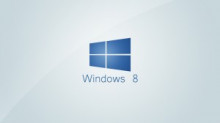Windows OS is one of the most popular Operating System series in the world. Microsoft has developed some of the very best software and OS to earn the reputation as the world’s leading software maker. Windows 8 is one of the latest Windows operating systems developed by the Redmond based software maker. Unlike Windows 7, which was a huge success, Window 8 is not doing well in the market even now. Many users, after downloading Windows 8 and installing it, have shared their negative views on the new OS.
Where did the company go wrong with Windows 8? Where Windows 7 is arguably one of the most popular Windows OS the company has ever developed, users and many experts have collectively reviewed Windows 8 as one of the worst missteps of the history of the software company. Let us analyze why Windows 8 failed.
Windows 8 is very different from all the other OSs the company had developed until date. The greatest change the company brought in was in the user interface. The Modern UI (previously known as the Metro UI) is nothing similar to the traditional Windows OS UI. The familiar desktop and icons are replaced by a Start Screen having tiles instead of icons. There is no Start button or the Start menu, which were two of the most recognizable features when it comes to Windows OSs.
After downloading Windows 8 and installing it, many users have found that the learning curve is steep when it comes to learning the features and understanding its use. Since some of the UI elements are entirely new, it takes time to learn. The built-in help and support module is not much good either. In short, users are left on their own to figure out what to do and how to access certain features.
Microsoft intended to unify the operating systems of mobiles, PCs and tablets. But, the company only managed to confuse their users and scare them off. Windows 8 was supposed to change how Operating Systems are conceived in the future. But, things did not go according to the script for the software company.
Microsoft seems to have spread itself too thin by trying to expand into various sectors all at the same time. Unifying Operation Systems should have been done in stages. Agreed Microsoft has to compete in a mobile sector and show its presence, but it can be in a manner that makes things easy for the customers and users as well. How can the company prosper if the customers are unhappy with its new releases?
